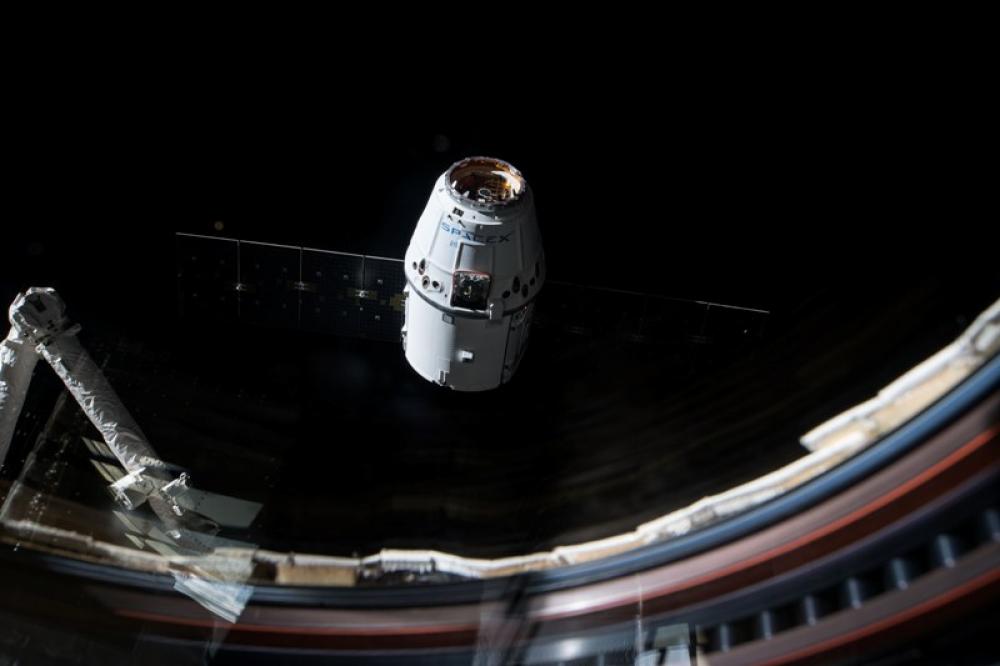Just Earth News | @justearthnews | 13 Jan 2018

Washington: SpaceX's Dragon cargo spacecraft is scheduled to splash down in the Pacific Ocean on Saturday, Jan. 13, west of Baja California, with approximately 4,100 pounds of NASA cargo, science and technology demonstration samples from the International Space Station.
The Dragon spacecraft will be taken by ship to Long Beach, California, where some cargo will be removed immediately for return to NASA. Dragon then will be prepared for a return trip to SpaceX's test facility in McGregor, Texas, for final processing.
A variety of technological and biological studies are returning in Dragon.
Hardware from the Made in Space Fiber Optics payload, which demonstrated manufacturing fiber optic filaments in a microgravity environment. Designed by the company Made in Space and sponsored by the Center for the Advancement of Science in Space (CASIS), the investigation pulled fiber optic wire from ZBLAN, a heavy metal fluoride glass commonly used to make fiber optic glass.
Research indicates that ZBLAN fiber pulled in microgravity may not crystalize as much, giving it better optical qualities than the silica used in most fiber optic wire. Results from this investigation could lead to the production of higher-quality fiber optic products both in space and on Earth.
Samples from APEX-05 were used to study a stress reaction in plants when experiencing reduced oxygen availably (hypoxia), which occurs for example, during times of soil flooding. Such natural hypoxic events are sensed by plants and can lead to either changes in growth and development to aid in the plant’s survival, or in extreme cases, lead to significant losses in productivity and even death.
These spaceflight experiments may help provide molecular targets for manipulation to help make plants more tolerant of low oxygen conditions and so contribute to agriculturally important traits such as crop flood tolerance.
Mice from NASA’s Rodent Research-6 study also will return live to Earth for additional study. The investigation, which was conducted jointly with the U.S. National Lab, evaluated a new drug delivery device for administering continuous low doses, which could help counteract muscle wasting and prevent the need for daily or frequent drug administration.
A tiny capsule, implanted under the skin, delivers a constant, low dose of a drug via a silicone membrane, with channels as narrow as 1/50,000 the width of a human hair. The drug, called formoterol, is a common therapy in asthma inhalers and for other lung diseases that relaxes muscles responsible for tightening a patient’s airways.
The low-dose delivery also could help avoid the known side effects of taking high doses long-term.
Dragon is the only space station resupply spacecraft currently able to return cargo to Earth. The spacecraft lifted off from Space Launch Complex 40 at Cape Canaveral Air Force Station in Florida Dec. 15 carrying about 4,800 pounds of supplies and scientific cargo on the company’s 13th commercial resupply mission to the station. It arrived on station Dec. 17.
For more than 17 years, humans have lived and worked continuously aboard the station, advancing scientific knowledge and demonstrating new technologies, making research breakthroughs not possible on Earth that will enable long-duration human and robotic exploration into deep space.
A global endeavor, more than 200 people from 18 countries have visited the unique microgravity laboratory that has hosted more than 2,100 research investigations from researchers in more than 95 countries.
Image: NASA